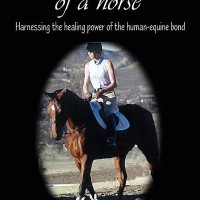
Dust settled as the leather fringe of well-worn chaps flung in the wind and the young cowboy pulled his horse to a quick stop. Then, clutching his reins in frustration, he looked up at the sky and shook his head. His horse had taken the wrong lead… again. (The horse’s lead describes the leg he leads off of when cantering. For example to canter to the right, the horse must be on the right lead, and the left lead to go left. When on the incorrect lead, the horse has trouble cantering in a balanced way.) “Well hold up just a second,” a steady voice broke the silence, and the young cowboy turned toward a lean man resting easily on his horse, who stood resting a hind leg and dozing off. “Do you know how to prepare him to take the right lead?”
The younger rider shook his head, and looked quizzically at the older horseman. “No.”
“See the preparation is the most important part,” the older cowboy’s soft blue eyes looked intently at the young man, who had turned his horse to face him.
The older cowboy lifted his rein and continued, “See, what you do is you set him up to take the right lead by teaching him first to move his hindquarters just a bit in the direction you want to go.” Moving his horse’s hind legs to the right he glanced over his shoulder at the well-muscled right hindquarter of his horse. “See, in order to take the right lead, he’s gotta shift his weight slightly onto the right hind leg. So you practice moving your horse’s hind quarters from one side to the other.
“Maybe you start off at the walk,” he went on, “and just walk down the fence line, and every few steps move his hindquarters over. And sure, he’ll move ‘em back where he prefers them. You know every horse has a certain preferred way of travel. So you just practice shifting that a little bit, until he starts to almost do it on his own.
“So then maybe you do this at the trot. You trot a few steps, shift his haunches over, and then,” he paused, “you walk.” He scans the faces of the riders all intently focused on him to be sure they got the point. “See, you don’t canter there, because the preparation is more important than the action.” And if your horse is not ready, and you rush him, he’ll take his preferred lead… every time.” He paused again, letting the words sink in.
I hit the pause button and thought about just what the cowboy, Buck Branaman, meant, and just what this meant in human relationships.
It’s true, people are inpatient, and often come to therapy wanting to dive right into the issues… again, no preparation. While they may be quick to pinpoint conflicts and patterns — and even therapists can do this — for some couples, the idea of what resolution looks like, or even how to prepare for it, can be rather elusive.
So, thinking about the importance of resolution, I turned toward the young couple that had come in to resolve their marital conflicts, and asked, “Do you know how to prepare for resolution?”
Two faces turned toward me, puzzled. “Well,” I paused, “how would you lay the ground work for a disagreement turning out okay?”
“Well, I guess we wouldn’t be so mad,” the woman turned toward her husband. He gazed back at her, his face softening. “And maybe we wouldn’t be yelling at each other.”
“So, you’d probably be a lot nicer to each other in order to prepare for resolution of the conflict?” I asked.
Two nods followed.
“Well,” I looked back at them as intently as Buck, the cowboy who had looked at the other riders, “you see, the preparation is the most important part — more important in fact than the actual resolution of the conflict.”